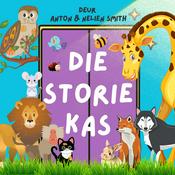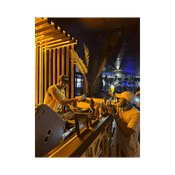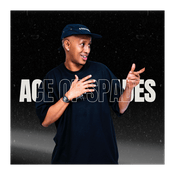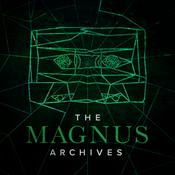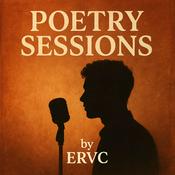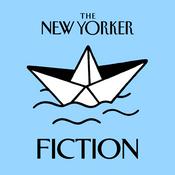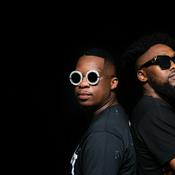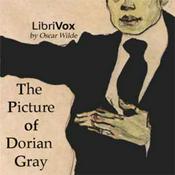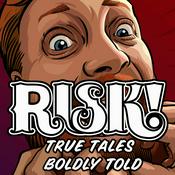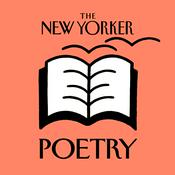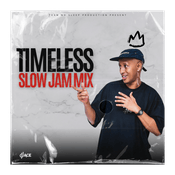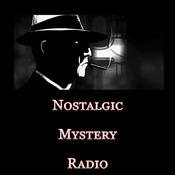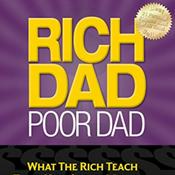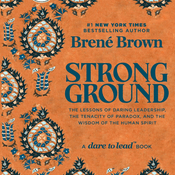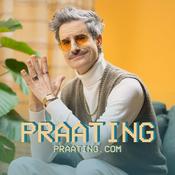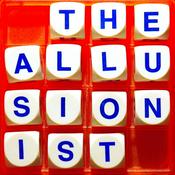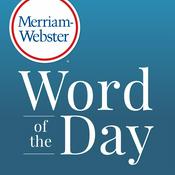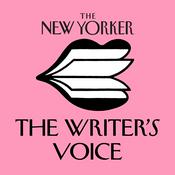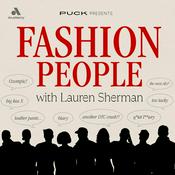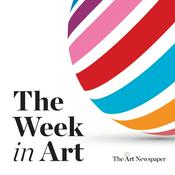130 episodes

A brush with... Olafur Eliasson
2025/12/17 | 1h 14 mins.
Olafur Eliasson talks to Ben Luke about his influences—from writers to musicians, film-makers and, of course, other artists—and the cultural experiences that have shaped his life and work. Eliasson was born in 1967 in Copenhagen and grew up between Denmark and Iceland, where his parents were from. His installations, sculptures, photographs and paintings, among other projects, reflect a profound concern with human presence in nature and how we perceive and interact with the world around us. His works can be deceptively simple or enormously complex, but often share a rigorous and reductive geometry, which may conversely produce expansive and multifarious perceptual, sensory and embodied effects. Eliasson has stated that “the spectator is the central issue”, a long-established aspect of conceptual and environmental practices, but for him it is important that the viewer not only completes the work, but is also transformed by it. This subjective and individual revelation is, he hopes, allied to a sense of collective experience, what he calls a “we-ness”, that often alerts his audience to wider cultural and social issues including the climate catastrophe. Indeed, environment, in multiple senses, is the fundamental element of his work.He discusses his deep concern about the climate catastrophe and the importance of action. He reflects on his concept of “seeing yourself sensing” and its shifting nature in relation to different works across his career, and how he often includes the word “your” in his titles as a gesture of trust towards his audience. He discusses the wealth of writers and thinkers that inform his work on a daily basis, from Donna Haraway to Alva Noë. He recalls the epiphany of experiencing a work by James Turrell and his fascination with early Renaissance conceptions of space. He reflects on his early fascination with breakdance and his current enjoyment of music by Hilda Gunnarsdóttir and Rosalía. Plus, he gives insight into life in his vast studio in Berlin, and answers our usual questions, including the ultimate: what is art for?Olafur Eliasson: Presence, Queensland Gallery of Modern Art, Brisbane, Australia, until 12 July 2026; Olafur Eliasson: Your curious journey, Museum MACAN, Jakarta, Indonesia, 12 April 2026, Your view matter by Olafur Eliasson, Padimai Art & Tech Studio, Tanjong Pagar Distripark, Singapore, 31 March 2026; and Olafur’s first permanent public work in the UK, Your planetary assembly, 2025, is on view at Oxford North, Oxford, UK now. Hosted on Acast. See acast.com/privacy for more information.

A brush with... Luc Tuymans
2025/12/10 | 1h 2 mins.
Luc Tuymans talks to Ben Luke about his influences—from writers to musicians, film-makers and, of course, other artists—and the cultural experiences that have shaped his life and work. Tuymans, who was born in 1958 in Mortsel, Belgium, and lives and works in Antwerp, has transformed the territory of painting in the late 20th and 21st centuries. Using photographs and images from film and other media, he tackles a breadth of subjects and motifs, including contemporary politics, cataclysmic historical events, art history, and apparently banal everyday objects and environments, with paintings that are redolent with atmosphere and poetic power. Tuymans’s process of finding the images and deciding how to transform them is slow and precise, and worked through in various stages before it reaches the canvas, where he makes the final piece in oil on a single day. In the resulting pictures, the motif can be veiled or oblique, and sometimes close to abstract, and he has used the term “authentic forgeries” to describe them. In this way, they articulate the elusiveness of representation through painting—a quality Tuymans has described as the medium’s “belatedness”—as well as the subjective nature of experience and memory, both personal and collective. He discusses the early impact of Piet Mondrian and Léon Spilliaert, his ongoing admiration for Francisco de Goya, and his response to Théodore Gericault and Mark Rothko in recent series of paintings. He reflects on the importance of literature, including the writings of Thomas Pynchon, and film, especially the painterly approach of David Lynch. He gives insight into his studio life and his singular approach to image-making, and answers our usual questions, including the ultimate: what is art for? Luc Tuymans: The Fruit Basket, David Zwirner New York, until 19 December; David Zwirner, Los Angeles, 24 February-4 April 2026; Luc Tuymans, Basilica di San Giorgio Maggiore, Venice, Italy, until 22 February 2026. Hosted on Acast. See acast.com/privacy for more information.

A brush with… Kader Attia
2025/12/03 | 1h
Kader Attia talks to Ben Luke about his influences—from writers to musicians, film-makers and, of course, other artists—and the cultural experiences that have shaped his life and work. Attia was born in 1970 in Dugny, France, and lives in Berlin and Paris. He grew up between the French capital and Bab el Oued, a suburb of Algiers in Algeria, and his Algerian-French identity and the culture and history of Europe and North Africa—the global north and south—have profoundly informed his subject matter and materials. His work across three decades in photography, collage, sculpture, installation and sound, is concerned with a central concept: repair. By association, the notion of repair is inevitably connected with violence and injury. Within this overarching theme, he explores political and social issues in the present and the complex legacies of colonialism. While directly addressing particular historical and current moments, his work is rich in metaphor, and he considers this poetic aspect crucial to art’s ability to effect social change. Attia regards his output as the evidence of an ongoing process of research, but despite its fundamentally philosophical and textual genesis, it is often dramatic visually and experientially.He reflects on what he calls the “menemonic traces” and ghosts present through his work, explains why he feels the gaze is a bodily phenomenon beyond the ocular, and discusses the importance of his trips while a young person in Congo and Mexico. He talks about his early interest in Michelangelo’s drawings, his engagement with writers from the psychoanalyst Karima Lazali to the poets Édouard Glissant and Aimé Césaire, and the cathartic power of music. Plus he gives insight into his life in the studio and answers our usual questions, including the ultimate: what is art for?Kader Attia: Shattering and Gathering our Traces, Lehmann Maupin, New York, until 20 December; Kader Attia. The Lost Paradise, Centro Andaluz de Arte Contemporáneo, Seville, Spain, until 18 January 2026; Kader Attia: A Descent into Paradise, Museo Amparo, Puebla, Mexico, until 4 January 2026.Bienal de Sao Paulo: Not All Travellers Walk Roads—Of Humanity as Practice, until 11 January 2026; The World Tree: 24th Paiz Art Biennial, Guatemala City and Antigua Guatemala, until 15 February 2026. Hosted on Acast. See acast.com/privacy for more information.

A brush with... Mary Kelly
2025/11/26 | 59 mins.
Mary Kelly talks to Ben Luke about her influences—from writers to musicians, film-makers and, of course, other artists—and the cultural experiences that have shaped her life and work.Kelly was born in Fort Dodge, Iowa, US, in 1941 and lives today in Los Angeles. She has played a fundamental role in the history and ongoing development of conceptual and feminist art, with works that have explored sexuality and women’s experience, wider issues of identity, the spectacle and trauma of war, and the nature of memory in relation to history and geopolitics. Informed by a range of thought, including critical theory, psychoanalysis and literature, her work takes diverse physical forms, but often manifests in multimedia installations, involving a rich materiality that includes text and documents, photography and printmaking, sculpture, sound and film. She reflects on her groundbreaking projects like Post-Partum Document (1973-77) and Interim (1984-89), and the way that her use of autobiography has shifted in her work over time. She discusses the dramatic shift in her life following her move to Beirut in the 1960s and the events of May 1968. She recalls the moment she encountered Franz Kline’s work aged 15 and how it confirmed a lifelong pursuit of non-figurative work. She reflects on her role within Conceptualism and her esteem for her peers in that movement. She discusses the importance of writers as diverse as Simone de Beauvoir, Jean Genet, William Carlos Williams and Jacques Lacan. Plus, she gives insight into her life in the studio and answers our usual questions, including a moving answer to the ultimate question: what is art for?Mary Kelly: We don’t want to set the world on fire, Pippy Houldsworth Gallery, London, until 17 January 2026 Hosted on Acast. See acast.com/privacy for more information.

A brush with... Peter Doig
2025/10/21 | 56 mins.
Peter Doig talks to Ben Luke about his influences—from writers to musicians, film-makers and, of course, other artists—and the cultural experiences that have shaped his life and work. Doig, who was born in Edinburgh in 1959 but grew up in Trinidad and Canada, has created a relentlessly inventive and evolving body of paintings over the past 40 years. Informed by memory, by Doig’s own photographs and found images, by an intimate knowledge and interpretation of art history, by a profound response to place and architecture, and by images and moods evoking diverse cultural forms beyond visual art, his works possess a poetic and sonorous sense of feeling and atmosphere. Often realised over many years, each painting is unique rather than part of a series, even if it shares recurring iconography with other pieces. Fundamentally concerned with figuration, Doig draws on a vast range of painterly approaches from resonant stains to thick impasto, stretching his medium to its full expressive potential and into the realms of abstraction. He has said that he wants painting to be a world unto itself and perhaps no other artist of the past few decades has created such a distinctive language for achieving that aim. Indeed, so widespread is his influence that one might describe a painterly strand in recent art around the globe as Doigian. Across his career, Peter’s work has been informed by a passionate engagement with music. He has said: “Music, being an invisible art form, is open to interpretation within the mind’s eye, and reflections from the mind’s eye are often what I’m attempting to depict in my work.” He achieves a particular tonality and ambience that evoke his aspiration to the condition of that artform, a factor emphasised in House of Music, the exhibition at the Serpentine South until 8 February 2026. He discusses several of the paintings in that show in depth, and reflects on his changing response to Trinidad, where he was based between 2002 and 2019, and his references in the paintings to the “residues of imperialism”. Among much else, he discusses the early influence of Edward Burra, his enduring fascination with Henri Matisse, his response to early graffiti art in New York, and his current fascination with Caravaggio’s Beheading of St John the Baptist (1608). He talks about his friendship and collaboration with the poet Derek Walcott and the importance to his work of STUDIOFILMCLUB, the repertory cinema he founded in his Port of Spain studio with Che Lovelace. Plus, he gives insight into his life in the studio, and answers our usual questions, including the ultimate: “what is art for?”Peter Doig: House of Music, Serpentine South, London, until 8 February 2026. There are a number of Sound Service events on Sundays through the length of the exhibition, as well as other evening sessions. Visit serpentinegalleries.org to find out more. Hosted on Acast. See acast.com/privacy for more information.
More Arts podcasts
Trending Arts podcasts
About A brush with...
Listen to A brush with..., Middagvervolgverhaal and many other podcasts from around the world with the radio.net app
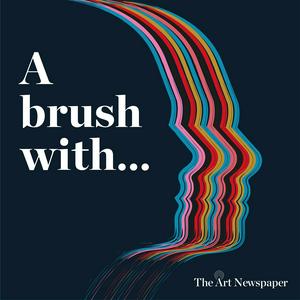
Get the free radio.net app
- Stations and podcasts to bookmark
- Stream via Wi-Fi or Bluetooth
- Supports Carplay & Android Auto
- Many other app features
Get the free radio.net app
- Stations and podcasts to bookmark
- Stream via Wi-Fi or Bluetooth
- Supports Carplay & Android Auto
- Many other app features
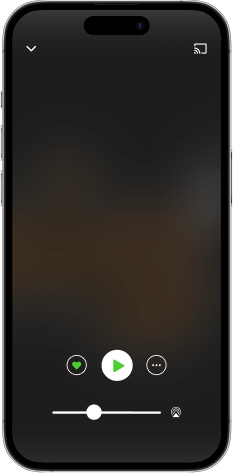

A brush with...
download the app,
start listening.

